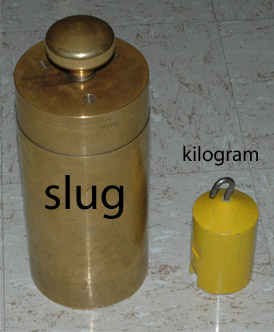Mass, Weight, Density (original) (raw)
Weight
The weight of an object is defined as the force of gravity on the object and may be calculated as the mass times the acceleration of gravity, w = mg. Since the weight is a force, its SI unit is the newton.
For an object in free fall, so that gravity is the only force acting on it, then the expression for weight follows from Newton's second law.

You might well ask, as many do, "Why do you multiply the mass times the freefall acceleration of gravity when the mass is sitting at rest on the table?". The value of g allows you to determine the net gravity force if it were in freefall, and that net gravity force is the weight. Another approach is to consider "g" to be the measure of the intensity of the gravity field in Newtons/kg at your location. You can view the weight as a measure of the mass in kg times the intensity of the gravity field, 9.8 Newtons/kg under standard conditions.
Data can be entered into any of the boxes below. Then click outside the box to update the other quantities.

At the Earth's surface, where g=9.8 m/s2 :
 |
The kilogram is the SI unit of mass and it is the almost universally used standard mass unit. The associated SI unit of force and weight is the Newton, with 1 kilogram weighing 9.8 Newtons under standard conditions on the Earth's surface. However, in the US common units, the pound is the unit of force (and therefore weight).The pound is the widely used unit for commerce. The use of the pound force constrains the mass unit to an inconveniently large measuring unit called a "slug". The use of this unit is discouraged, and the use of exclusively SI units for all scientific work is strongly encouraged. |
|---|
What about the weightless condition?